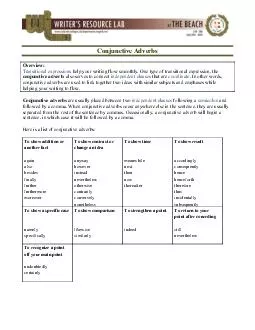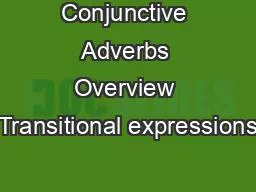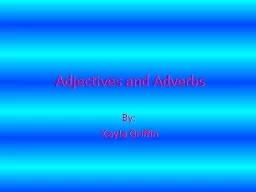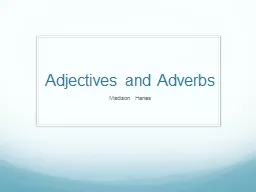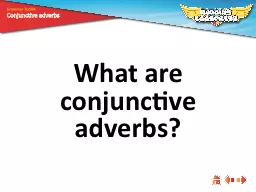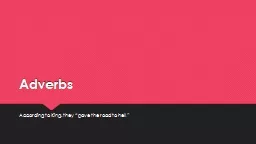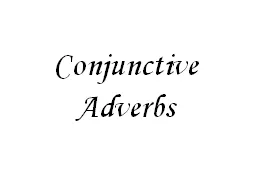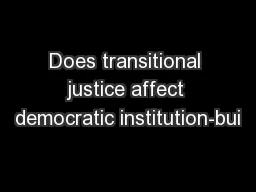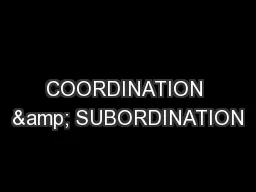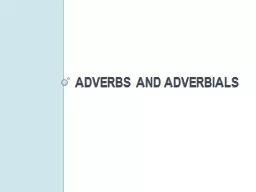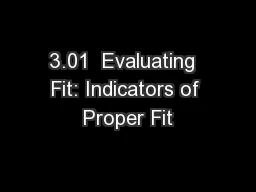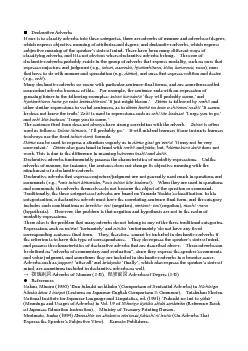PDF-Conjunctive Adverbs Overview Transitional expressions help your writing flow smoothly
Author : jane-oiler | Published Date : 2015-03-16
One type of transitional expression the conjunctive adverb also serves to connect independent clauses that are coordinate In other words conjunctive adverbs are
Presentation Embed Code
Download Presentation
Download Presentation The PPT/PDF document "Conjunctive Adverbs Overview Transitiona..." is the property of its rightful owner. Permission is granted to download and print the materials on this website for personal, non-commercial use only, and to display it on your personal computer provided you do not modify the materials and that you retain all copyright notices contained in the materials. By downloading content from our website, you accept the terms of this agreement.
Conjunctive Adverbs Overview Transitional expressions help your writing flow smoothly: Transcript
Download Rules Of Document
"Conjunctive Adverbs Overview Transitional expressions help your writing flow smoothly"The content belongs to its owner. You may download and print it for personal use, without modification, and keep all copyright notices. By downloading, you agree to these terms.
Related Documents

